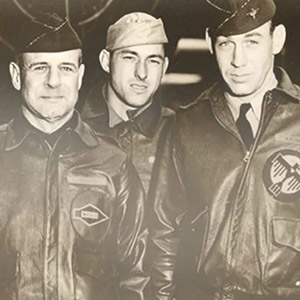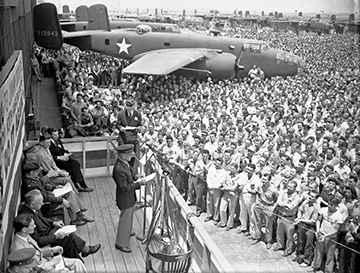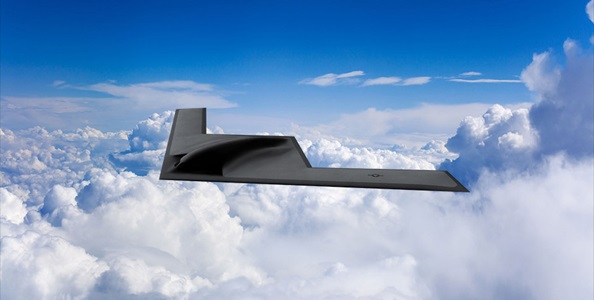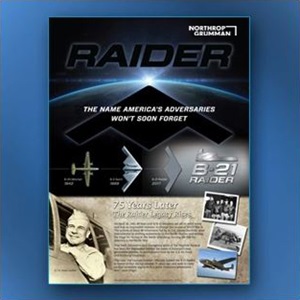The Doolittle Raid, the Raiders and Their Legacy
by Tony Chong
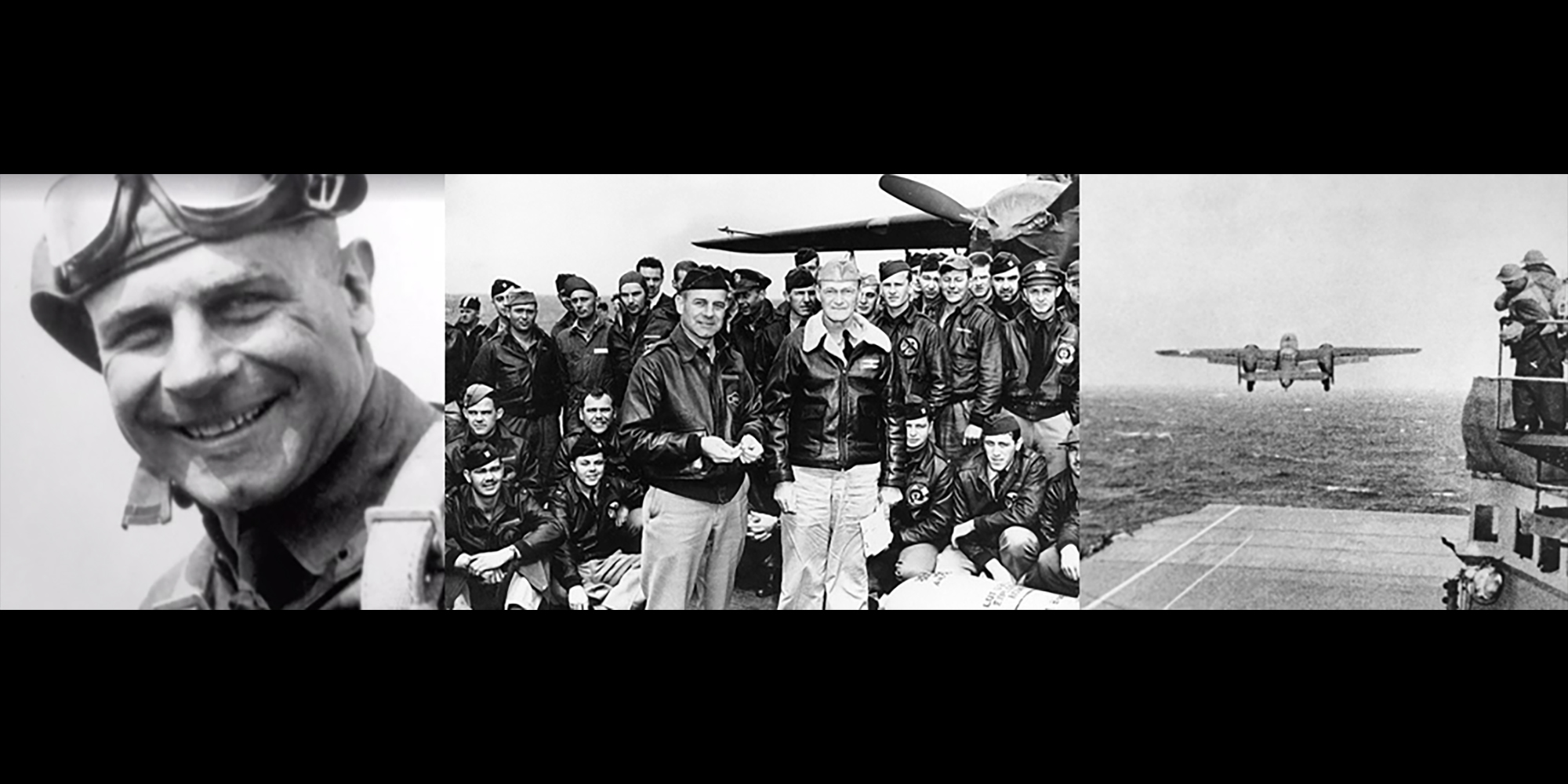

The Doolittle Raid: Inspired, Audacious, and Unexpected
The weeks following the devastating attack on U.S. forces in and around Pearl Harbor, Hawaii on 7 December 1941 were wrought with a depressing litany of bad news for America and its Pacific allies. In quick succession, the Japanese military invaded and overran much the Southwestern Pacific and Southeast Asia, threatening Australia, India and much of unoccupied China. The U.S. mainland itself was shelled by submarine deck guns as Japan appeared unstoppable and invincible.
On 18 April 1942, that aura of unstoppable invincibility was pierced by 80 men. Although the physical damage they caused was small, the psychological and strategic repercussions that followed their daring attack were immense. For that single deed, the Doolittle Raid, the Raiders and their legacy have gone down in history as heroes of the first order.
As with any operation of this nature, Doolittle and his men only comprised the tip of the spear. President Franklin Roosevelt adamantly insisted that a retaliatory strike take place as soon as possible. From that directive, Army Air Force and Navy leaders and their staff considered all conceivable possibilities as they formulated and planned the raid. Ultimately, thousands of people were involved.
That plan was bold and inventive. While it was theoretically possible, no one had ever tried launching land-based medium bombers from an aircraft carrier before, especially fully loaded for an operational combat mission. Of the medium bombers and carriers available, the platforms best suited for this task were the twin-engine, twin-tailed B-25 Mitchell and the Yorktown-class USS Hornet.
After an intense period of training with their all-volunteer Army crews in Florida and a cross-country flight, sixteen Mitchells were hoisted aboard Hornet at Naval Air Station Alameda in California. Hornet and her escorts departed Alameda on 2 April and rendezvoused with USS Enterprise and her Task Force at sea on 8 April. Since Hornet's decks were covered with Army bombers, Enterprise would provide air cover with her fighters.
Originally, the plan was to launch the B-25s from about 400 miles off the coast of Japan. This would allow the aircraft to bomb a variety of targets and have enough fuel to reach friendly land bases in China. That plan went out the window when an enemy picket ship spotted the fleet and radioed their location to the Imperial Japanese Navy.
Once the picket ship was sunk, it was decided to launch the bombers early rather than abort the mission. They were 620 miles off the Japanese coast. This meant the aircraft and crews were at the ragged edge of reaching the friendly bases in China. The Raiders launched anyway, despite heavy seas and a rolling, pitching deck, allowing the valuable carriers to return to Pearl Harbor undamaged and ready for the next battle.
Japanese military leaders were well aware of the possibility of an American counter-attack. One of the primary intents of their aggressive expansion in the Pacific was to secure the home islands from such a strike. Their vast new perimeter put Army Air Force bombers far out of range, and Navy carriers would be at high risk if they approached close enough to Japan to launch their aircraft, at that time about 200 miles.
The use of Army bombers taking off from carriers at a far greater range than Navy aircraft upset that calculus. The Raiders successfully hit their targets, facing only light opposition as the Japanese were not expecting the American fleet to be within range until the next day.
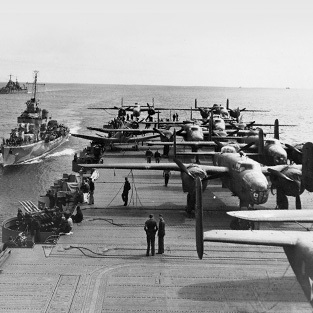
Although no Raiders were shot down, none of the aircraft landed at their Chinese bases. One crew diverted to Vladivostok in the Soviet Union and was interned. Four crews ditched along the Chinese coast, one crew belly-landed in a rice paddy, and the rest bailed out over China. Two men drowned, one died in a fall after a parachute landing, and eight were captured, with three eventually being executed by the Japanese. Of the remaining five prisoners, one died in captivity.
The Chinese rescued the rest of the crews, including Jimmy Doolittle. President Roosevelt revealed the attack to the world on 21 April, saying the aircraft came from a base in mythical "Shangri-La." American morale surged at the news. Lieutenant Colonel Doolittle was immediately promoted to Brigadier General and awarded the Congressional Medal of Honor a month later.
The raid itself was inspired in conception, audacious in execution and unexpected in composition. Japanese complacency was shaken by the attack, and their leadership was deeply embarrassed. The repercussions included pulling several air and naval units from front line operations to shore up homeland defenses and the approval of a plan to destroy the American carriers in a decisive battle.
That operation, a proposed invasion of Midway Island, proved to be decisive indeed. At the end of the engagement, which lasted from 4-7 June 1942, four Japanese carriers were sunk, shattering the core of Japan's naval aviation. Midway would be the turning point in the Pacific Theater, a critical battle spurred by the actions of 80 brave men three months earlier.
Color photo courtesy of the Lone Star Flight Museum. B&W photos courtesy of the U.S. Air Force.
